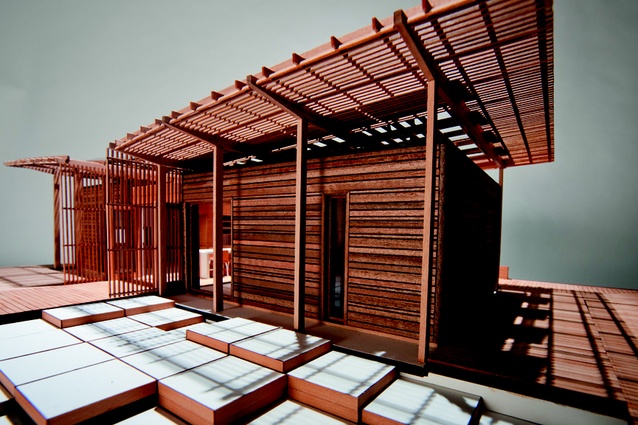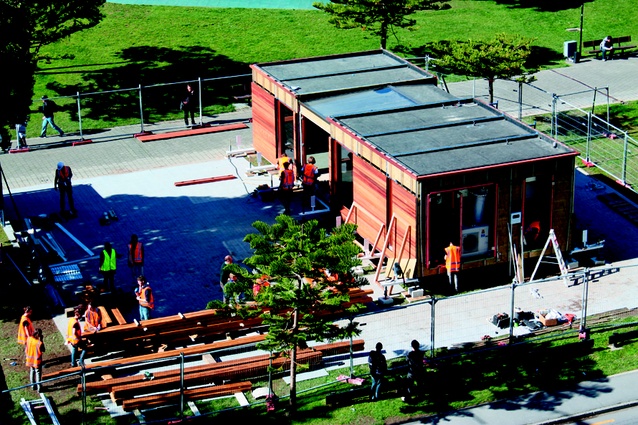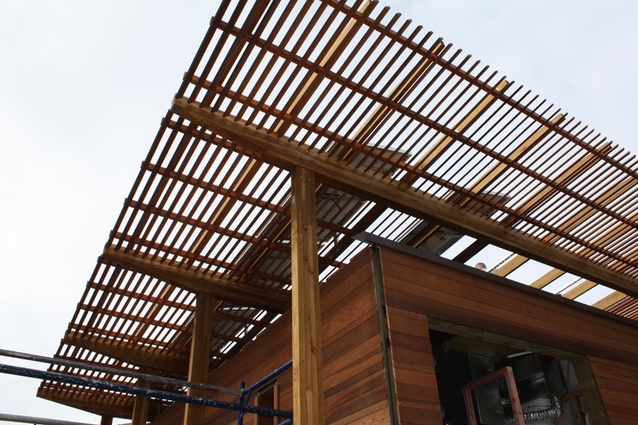Energy-efficient bach by Victoria University students
An energy-efficient bach designed by Victoria University architecture students built with the help from Mainzeal is a finalist in a United States Government competition.
The U.S. Department of Energy’s Solar Decathlon 2011 competition challenged students to design and build an attractive, affordable, net zero energy house operating on solar energy. One of the 20 worldwide finalists is Meridian First Light House, designed and constructed by Victoria University architecture and building science students with help from Mainzeal.
The competition gives the finalist teams seven days to build their solar houses, so the New Zealand team prefabricated theirs into six transversally split modules. The modules are complete with finishes, fixtures, plumbing, electrical, and mechanical equipment for easy connection on site in Washington DC. Mainzeal helped the students with choice of materials, methods of assembling and disassembling the bach as well as finding trades and organisations to supply materials and labour at no cost.
The 5.4mx3.4mx14m bach has one bedroom, a living/ dining/ kitchen area, bathroom and laundry/walk-in wardrobe. A free standing study unit separates the main space. The bach sleeps five, with three on a foldout lounge suite.
To create a sense of space and bring the outside inside, the deck runs through the width of the bach with glass doors either side. All windows are triple-glazed to retain heat, with a large three panel skylight and automatic blind system to let in maximum light. To capture northern hemisphere sun the house faces south for the competition.
Filled with wool insulation made from recycled carpet off cuts the bach is effectively a big box with a thick woolly jumper. Polyester bonds the product together, rather than less environmentally friendly glues or resins. Wool was chosen because it’s a local, renewable resource, is low in conductivity, non-allergic, fire resistant and safe to handle; it absorbs gases and fumes, water beads off and is low in embodied energy. Sheep wool insulation does not settle over time, an important factor as the bach has a very thick envelope.
The house is clad in light, natural Canadian cedar that travels well and suits the bach look. In a kit-set form for straightforward reassembly, the timber will be packed seperately from the modules. A clip-on aluminium baton system connects to the exterior cladding, and a 70mm cavity conceals downpipes.












